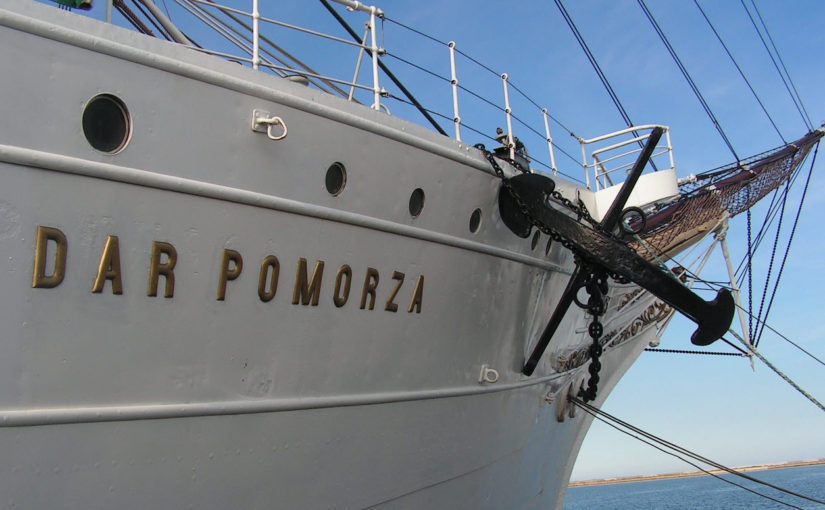In September 1939, Hitler and his Nazi German army invaded Poland.
And did so in an embarrassingly short period of time.
The Germans (and the Soviets) destroyed the country and annexed it.
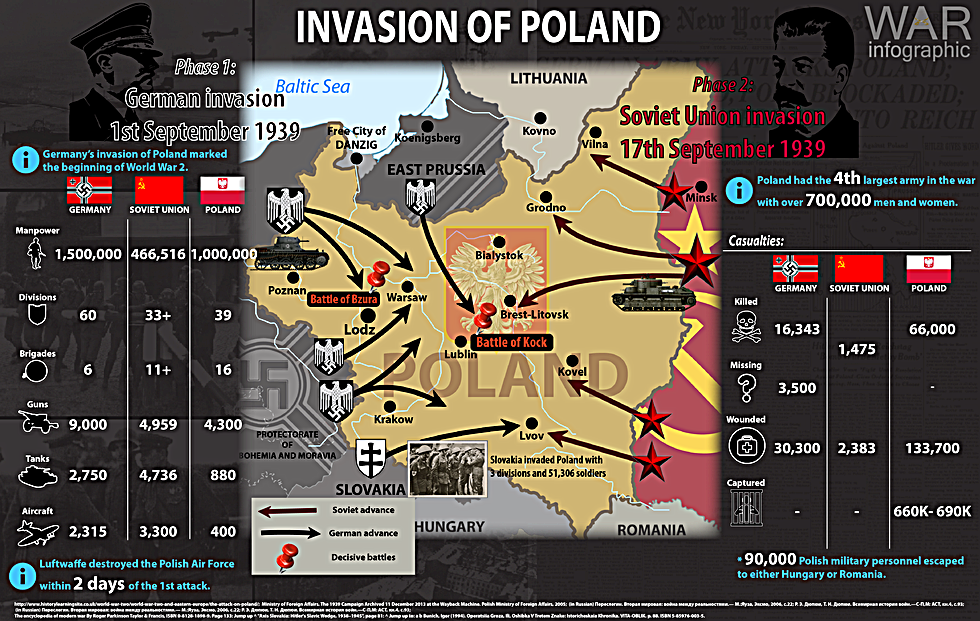
The solders, intellectuals, and leadership were all sent to the gulags, where they were later all killed.
It would be a half a decade before Poland reappeared out from the ashes of that most horrible September.
One of the mysteries is what happened to the Polish Navy. Well, here in this post we discuss that.
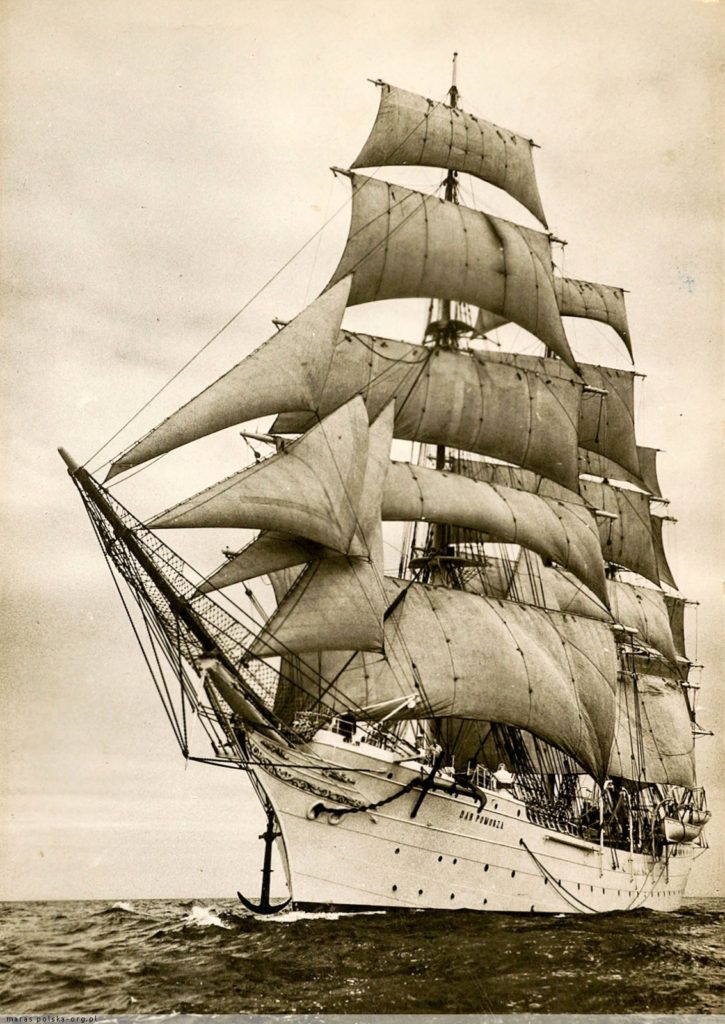
Dar Pomorza was one of the few Polish ships to escape initial destruction in September 1939.
The butcher’s list in that month included:
- Bałtyk, abandoned and captured by the Germans
- The destroyer-sized minelayer ORP Gryf, lost on the third day of the war.
- The French-built destroyer ORP Wicher.
- All six Jaskółka-class minesweepers, each sunk or captured
- The old Russian gunboats ORP Generał Haller and ORP Komendant Pilsudski, sunk.
- The former German torpedo boat ORP Mazur, sent to the bottom
- The entire Pinsk riverine flotilla of more than a dozen monitors and gunboats, scuttled or likewise captured
Dar Pomorza, along with other key maritime assets, were saved by design.
Adm. Unrug (who spent the rest of the war in German POW camps) crafted his “Peking Plan” that sent the new destroyers ORP Burza, ORP Błyskawica, and ORP Grom to British waters in late August 1939. There, they formed a new Free Polish Navy under the escaped Chief of Staff VADM Świrski after Warsaw fell.
Likewise, the wily former Great War U-boat skipper sent his five submarines abroad after their initial war patrol under his Worek Plan with orders to sail to England if possible, and otherwise to be interned in a neutral Swedish port.
ORP Wilk made it to England as did ORP Orzeł (after a narrow escape from Estonia) while ORP Sęp, ORP Ryś, and ORP Żbik sailed for Sweden.
The training ship ORP Iskra, on a Med cruise, sailed for Casablanca and spent the war as an MTB tender in Gibraltar.
Under the command of Capt. Konstanty “Cat” Kowalski, Dar Pomorza sortied from her Polish homeport in late August 1939 and made Stockholm, where the ship was interned.
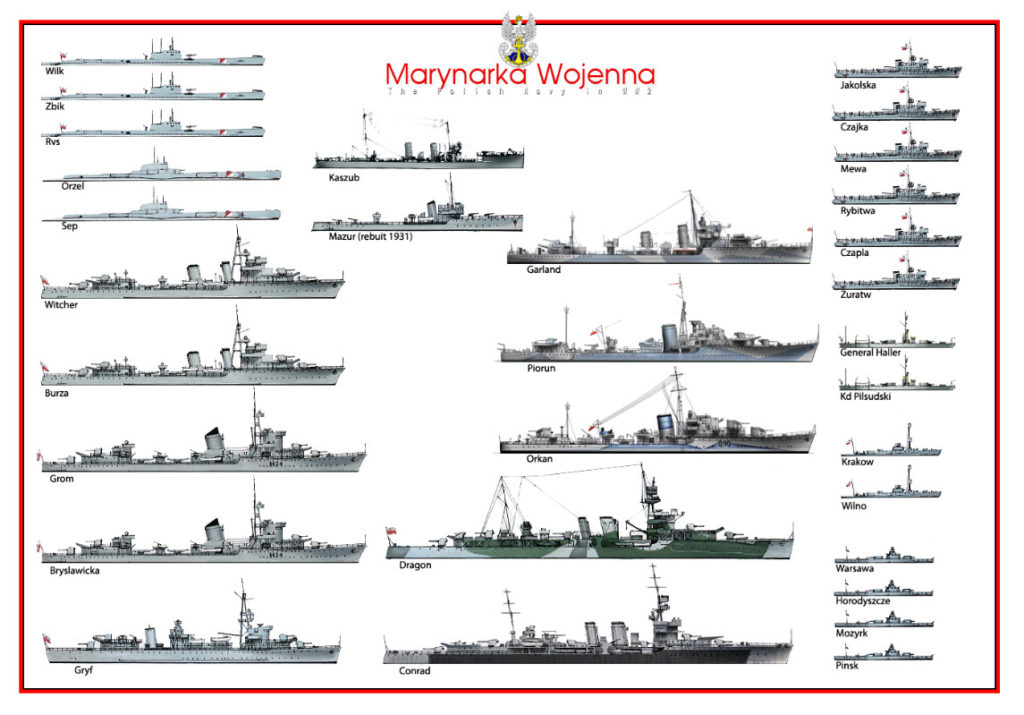
Not to be kept from the war, Cat left the White Lady with seven volunteers commanded by the ship’s radioman and subsequently bugged out for England with the rest of her crew and 149 cadets, destined for Polish-flagged freighters and Free Polish naval ships.
Once there, he reformed the Polish merchant school in Southampton where its trained replacement sailors for the Gdynia-America Shipping Lines who sailed with Allied cargoes under the Polish flag during the conflict.
Polish merchant ships carried more than 5 million tons of cargo during the war and were part of every campaign in the ETO from Dunkirk to the liberation of Denmark.
Meanwhile, former cadets from Iskra and Dar Pomorza filtered out not only through the Polish vessels but also the Royal Navy proper—four such students went down with HMS Hood in 1941.
Once the war was over, Dar Pomorza sailed for home in October 1945, arriving there with a scratch crew.
As for Cat, eschewing a return to Soviet-occupied Poland, he elected to emigrate to the U.S. and became a merchant mariner there. He was not alone. VADM Świrski, the former Tsarist officer who led the Free Polish Navy, did not return to Poland and remained in London exile until his death.
Unrug, the fleets 1939 boss, likewise settled in France after his liberation from Oflag VII-A Murnau by the U.S. 12th Armored Division in 1945.
.
Regardless of the country’s location behind the Iron Curtain, Dar Pomorza remained Poland’s ambassador, taking part in regular merchant training cruises around Europe beginning again in 1946. Notably, Capt. Konstanty Matyjewicz-Maciejewicz, her former skipper during her round-the-world cruise, was head of the merchant marine academy at the time, having survived the war under occupation despite some rough handling from the Gestapo.
For more information
You can find a very detailed article and summary of the Polish Navy during World War II HERE. If you have any interest at all in this subject, you would find this article riveting.
Other links
- https://sites.google.com/site/secondpolishrepublik/mis-articulos/chapter-09
- https://en.wikipedia.org/wiki/Polish_Navy_order_of_battle_in_1939
- http://hmscavalier.org.uk/G90/ About the ORP Orkan
- https://en.wikipedia.org/wiki/ORP_Burza
- https://en.wikipedia.org/wiki/Grom-class_destroyer
- https://en.wikipedia.org/wiki/Peking_Plan
- https://en.wikipedia.org/wiki/ORP_Wilk_(1929)
Conclusion
I find this very interesting.
You see, when a nation collapses, and is destroyed in such a way that it no longer appears on any maps, what actually happens is that the survivors gather themselves and flee. Then, far and away, they survive. Some fight on, while others retire.
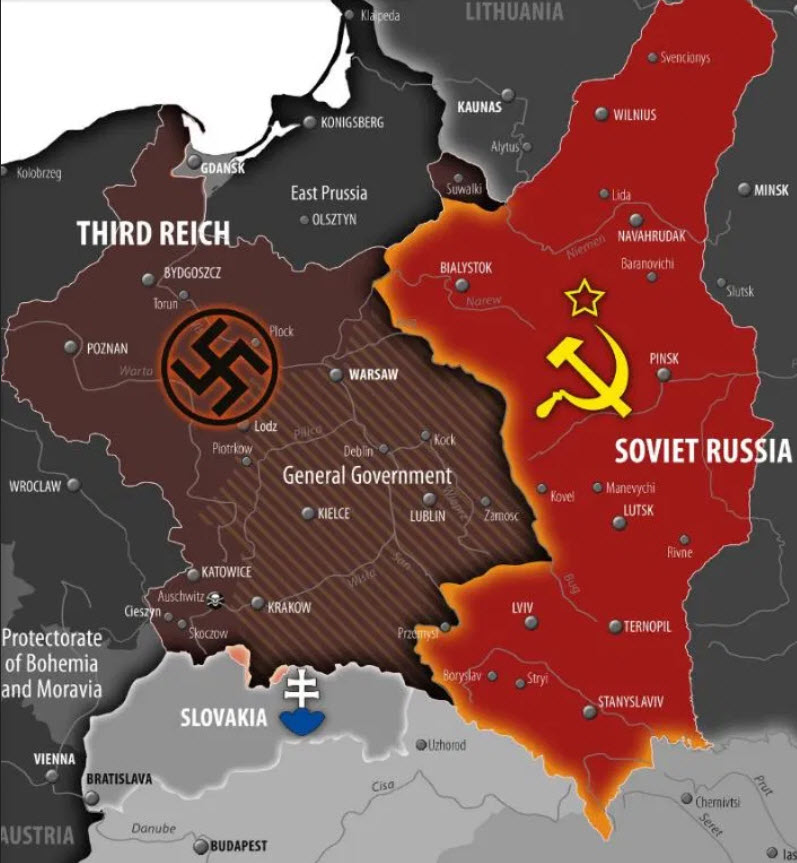
What ever happens in the future regarding the collapse of nations, you must realize that collapse is never total, complete and final. But rather the remnants flee and set up enclaves far away. Many times they simply interact with the local cultures and create cultural enclaves. Such as what happened with the Confederates that fled the United States during the loss of the American civil war.
And with this in mind, we can see that life goes on.
Sure Poland was devastated to a point where it was a land of rubble and destruction, but those that survived lived on elsewhere and merged their culture and understandings with the locals near their new settlements.
A word to the wise for anyone who is worrying about an unknown future.
Do you want more?
You can read more in my Happiness Index here…
Life & Happiness.
Articles & Links
Master Index.
- You can start reading the articles by going HERE.
- You can visit the Index Page HERE to explore by article subject.
- You can also ask the author some questions. You can go HERE to find out how to go about this.
- You can find out more about the author HERE.
- If you have concerns or complaints, you can go HERE.
- If you want to make a donation, you can go HERE.

